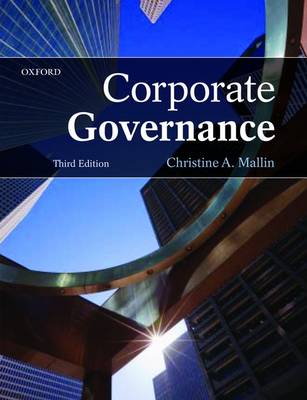By Torben Juul Andersen, Maxine Garvey, and Oliviero Roggi
For decades, the press has been full of fascinating and colorful stories about prominent and heralded enterprises ending up in scandal and bankruptcy. These include the diversion of corporate funds in the Maxwell Group in the early 1990s, the trading losses that made Barings Bank extinct in the mid-1990s, the accounting frauds at WorldCom in the late 1990s, and the spectacular collapse of Enron in the early 2000s. One could think and hope that these stories were exceptions, and that we learn from them, but this is not quite the case, as history seemingly repeats itself over and over again.
In early 2008, the board of Société Générale learned that a trader, Jérôme Kerviel, was capable of losing $7.2 billion for the company. He had the authority to put $183 million at risk, and was still able to increase the exposures to as much as $73 billion, exceeding the market value of the bank. The internal control systems, and the managers who used them, did not react, and this failure of risk governance cost both money and reputation. Later Bernard Madoff was charged with investor fraud as his Wall Street firm, Bernard L. Madoff Investment Securities LLC, was engaging in a major ponzi scheme paying returns to investors with proceeds from newly invested money. The associated losses were estimated in excess of $50 billion hitting investors around the globe.
There are many examples in emerging markets as well, for example, in Brazil, where pulp producer Aracruz and meat processor Sadia both suffered huge losses on foreign exchange derivatives. Similarly, Ceylon Petroleum Corporation (CPC) in Sri Lanka lost millions on commodity contracts. In these cases, the boards, and the main shareholders including the Sri Lankan Government in the case of CPC, asserted that the executives acted without proper authorization but the final responsibility remained with the board.

Risk-taking is fundamental in business, where owners take a view on the future and commit their organizations accordingly. Taking risks and dealing with uncertainty in the competitive environment is part of doing business, and is the basis for entrepreneurial initiatives. Consequently, the effective oversight of risk-taking is a fundamental part of corporate governance, and a key responsibility of the board.
The board of directors and the executive management team must both protect and enhance profitable business activities in the face of risks and potential disasters that can arise in an unpredictable world. Formal risk management approaches can facilitate some of this, but proactive risk-taking activities are necessary to create new solutions that can deal with unexpected changes in the environment. That is, a business must be willing to take risks and be innovative in order to develop effective responses for future changes.
Effective risk governance consists of three important elements of practice: corporate governance, enterprise risk management, and strategic decision-making. Corporate governance considers the role of the board in its fiduciary obligations towards the shareholders to fend off major losses and optimize the value-creating potential of the enterprise. Enterprise risk management is a formal framework for structured risk management processes, which applies analytical tools to identify, assess, manage, and monitor major risks that may influence future performance. Strategic decision-making looks at risk analysis in forward-looking action plans and ongoing project investments carried out to execute the strategic aims. Proper practices to guide these aspects of risk governance can lead to better risk management outcomes.
It is imperative to consider both the downside and the upside of risk. Looking at the future, we see a changing risk landscape where environmental events are more frequent, intertwined, and complex, which will lead to higher uncertainty and unpredictability. Because of this, proactive risk-taking is essential, as is developing effective responses to unpredictable conditions. This is why the structural elements of the organization are also essential for effective risk management, including a risk aware corporate culture, decentralized decision processes, open information and communication systems, interactive management controls, and incentives commensurate with proactive risk-taking.
History suggests that the human factors behind adverse risk events and corporate scandals are the same no matter where in the world they happen, the United States, Europe, or different emerging markets. For the same reason, we also believe that these proposed remedies are universal. Managers, executives, and board members around the world can learn from the mistakes of others and take heed of suggestions for good risk governance practice.
Torben Juul Andersen is Professor of Strategy and International Management at Copenhagen Business School. Maxine Garvey is a Program Leader for The World Bank. Oliviero Roggi is Professor of Finance at the University of Florence and Visiting Professor of Finance at the NYU Stern School of Business. They are authors of Managing Risk and Opportunity: The Governance of Strategic Risk-Taking.
Subscribe to the OUPblog via email or RSS.
Subscribe to only business and economics articles on the OUPblog via email or RSS.
Image: Business Risk Luck Chart Arrow Wealth Finance. Public Domain via Pixabay.
The post Finding opportunities in risk management appeared first on OUPblog.



 The UK’s Alternative Investment Market (AIM) expanded rapidly during the 12 years following its inception in 1995. Then from 2007 onwards it went into decline. David Blackwell, in his article ‘
The UK’s Alternative Investment Market (AIM) expanded rapidly during the 12 years following its inception in 1995. Then from 2007 onwards it went into decline. David Blackwell, in his article ‘